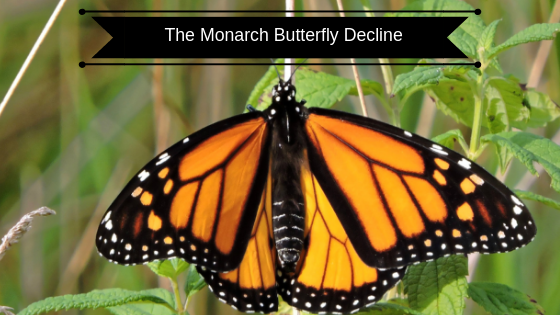The Importance of the Milkweed to the Monarch Butterfly Population
Shorter days and cooler nights mean many changes are in the air, not the least of which involves the monarch butterflies that we have come to appreciate on a warm summer day. Even if you are not a regular viewer of the latest environmental news, it is hard to miss the report of monarch decline.
During late summer, I marveled at the number of eastern monarchs along the Mackinac Island shoreline, more than I have seen in recent years. This was largely due to the increased availability of milkweed, the plant necessary for the butterflies’ breeding.
While the monarchs were noticeable during late summer, population numbers are still falling. According to the National Wildlife Federation, monarch numbers declined by almost 15 percent again this year, down as much as 90 percent in the past 20 years.
Most of the decline gets blamed on environmental impacts. Hurricanes and other natural disasters disrupt winter migration routes, while the steady loss of open fields means less and less milkweed. Genetically Modified Organisms (GMOs), also spell trouble for monarchs, particularly corn and soybeans, which require heavy applications of herbicide to thrive, herbicides that target plants like milkweed. No milkweed, no monarch butterflies.
While monarchs eat the nectar of many flowering plants, milkweed is crucial to their survival. Females lay eggs on milkweed plants, and then larvae feed on the plant until they emerge as the bright orange and black flying beauties. Milkweed also protects monarchs from predators, as the latex of the plant is both distasteful and even poisonous to other insects, further adding to the plants symbiotic relationship with the butterfly.
What can be done to help monarch numbers recover? According to a recent National Public Radio feature, home gardeners help by planting more milkweed and allowing some lawn or field areas to remain native. Other flowering plants in the same soil can also help, by providing the adult butterflies a wider variety of mealtime options.
Any monarchs still hovering in the area are preparing to migrate to Florida, Cuba, or even Mexico, where they will hope to repeat the mating cycle, ensuring another group of offspring next season can again wing north. With more than a thousand miles between winter and summer destinations, the miracle might be that any monarchs make it north. The butterflies that head south are not the same individuals that return north, however, as it requires several life cycles to complete the migration.
Yes, milkweed is more readily available, and monarchs are in the news because of their precarious population numbers. Here’s hoping this combination of nature and news soon means an uptick in their brilliantly colored numbers.




